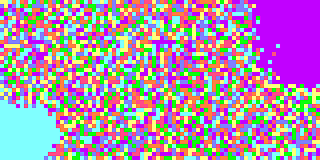 Three rings - to the wise elves
Three rings - to the wise elves
- for the good of the proud.
Seven rings - for the cave dwarfs
- for their mountain labor.
Nine to the people of Middle-earth ...
John Ronald Ruel Tolkien
When I work on games , I pay a lot of attention to design. We are not talking about a beautiful picture, although it certainly matters. First of all, comfortable game mechanics are important to me. The game should be fun. When in Minesweeper, when you click on an empty field, all fields that are not adjacent to mines automatically open - this is convenient. The well-known solitaireit can also be greatly improved by simply eliminating unnecessary steps for the user. But today I want to talk about a different game. The same one that is depicted on the KDPV (as usual, all the pictures in the article are clickable).
The original Filler game was developed by Gamos back in 1990 and ran under MS DOS. Since then, many clones of it have been released, working on every imaginable and unthinkable platform. At some point, I also decided to “be in trend” and develop my own version of this game. Okay, okay, I just wanted to test how Dagaz handles so many mutable pieces on the board.

The essence of the matter is quite simple - the entire playing field is randomly filled with squares of six different colors (observant readers may notice that I have abandoned the original diamonds). The lower left and upper right corners belong to the players. During their turn, each player can choose a color that borders his area. The entire territory of the player is recolored by attaching bordering areas of the same color. The goal of the game is to capture a large area. It may happen that one of the players will lose possible moves before the entire no-man's territory is distributed. Well, in this case, the player suffers an early defeat.
Two important elements of the user interface can be seen in the picture. The two-color stripe on top is designed to save players from tedious calculations in the mind of the one whose territory is larger. It would be possible to display the exact values of the captured territory, but I try not to use numerical designations where they can be dispensed with. As for the panel at the bottom, it is with its help that the player makes his move. In addition to the current one, only those colors that are allowed to be selected according to the rules of the game are displayed on it. Keyboard input is also supported. You do not have to bother poking the mouse on the screen, but limit yourself to pressing just one key with the selected number.
Both are examples of code reuse in Dagaz
Sokoban ( , ). . , , . , -.
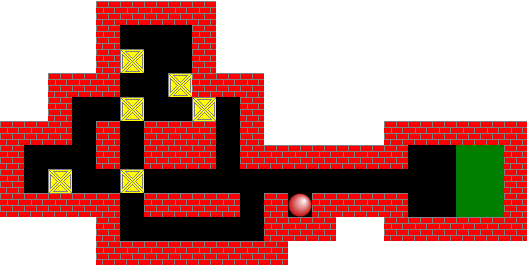
— . , "".
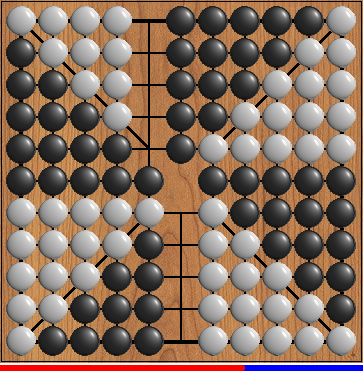
.

— . , "".

.
Of course, the first thing that grateful users asked me about was to reduce the size of the playing field (playing on an 80x40 board is quite entertaining, but extremely long in time). I, in turn, decided to add tactical variety to the game. The basic idea behind Filler is brilliant, but there is nothing that couldn't be made better. First of all I thought about the walls. With their help, you can build labyrinths!

Less obvious idea - areas of the playing field, filled with one of the usual colors, but ... not randomly. First of all, it is, of course, a prize for a more efficient player. Whoever gets to a large area of the same color first will have a significant advantage in points. But there is another, no less important application. Extended homogeneous areas allow you to move around the board almost instantly, capturing territories more effectively, as well as cutting off the enemy from promising directions.
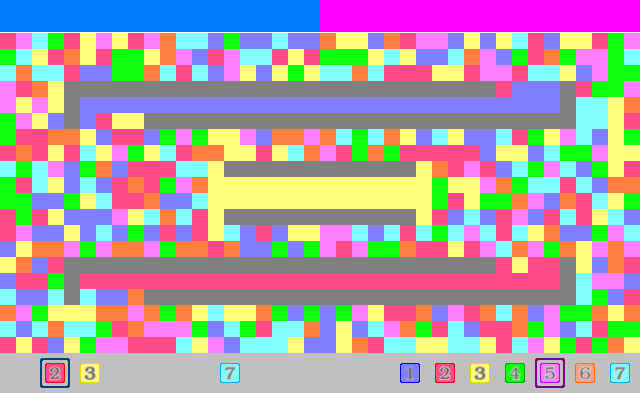
Further, I did not like the fact that territory captured by one of the players cannot be returned to the game in order to later redistribute in another way. I added a "darkness" to the game that spreads across the board with every move. The walls restrict her movement, but no colored areas are an obstacle for her. Of course, without any deterrent, darkness would simply spread across the board, crushing both players. Some fuses were required.
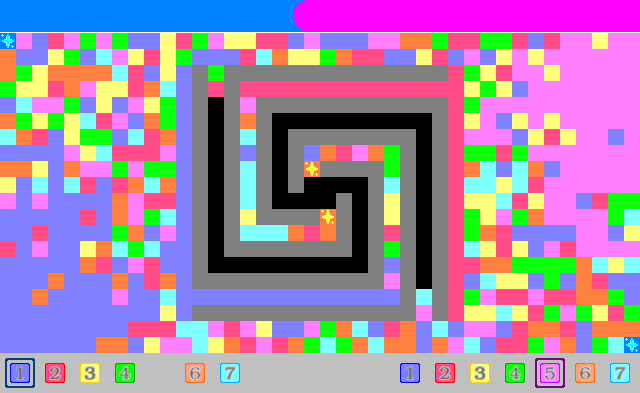
Special fields with yellow "sparks" allow you to "undermine" the darkness in contact with them, filling the area captured by it with randomly distributed colors. The cells adjacent to this area are also "blown up", which allows you to destroy the walls. Blue "sparks" allow you to stop the darkness by "freezing" the front of its spread. This is a kind of universal fuse. To "freeze" it does not have to border on darkness. Both types of detonators are triggered both when players reach them and when darkness gets to them first.
By the way, about explosions
. . , , . , . " ", 2001 , .
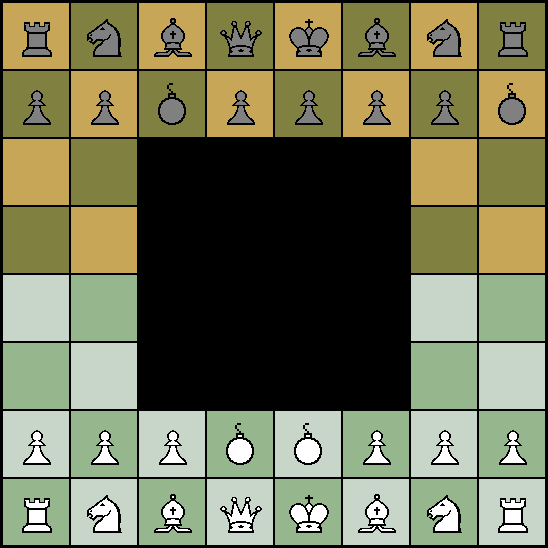
, , . , . ? , . , , . .

, , . , . ? , . , , . .
Detonators can be used by themselves, dynamically building a "maze" depending on the actions of the players. The fact is that the freeze does not actually affect the front of the spread of darkness, as I said earlier, but on all cells that change their state when the move is made. That is, if the player chooses a color bordering on freezing, all the squares he attached on this turn will turn into walls. This is a very insidious obstacle that can lock the player completely. Yellow "sparks" are much less dangerous.

Well, I’m obviously not the first one who decided to develop another clone of the wonderful Filler game. Let's hope it won't be the last one either. More games, comrades! Good and different.